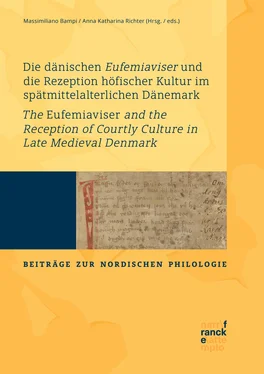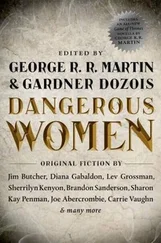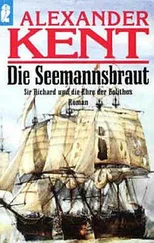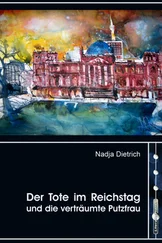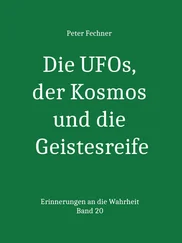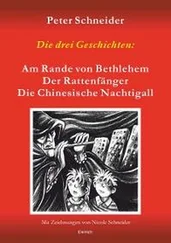Romances appeared in today’s Norway and Iceland in the thirteenth century, and in Sweden and Denmark, here collectively referred to as East Scandinavia, the genre was introduced in the fourteenth century and seems to have attracted interest during the fifteenth century.5 The printing technology was first introduced in Denmark and Sweden in the 1480s, and during the first decades it was mostly used for religious and educational texts.6 In Sweden, no secular narratives, like romances, were printed at all in this early phase, and this pattern would last. After the nobleman Gustav Vasa ascended to the Swedish throne in 1523, printing became monopolised under state control, thereby limiting the commercial exploitation of the printing technology.
In Denmark, a somewhat different path was taken, as secular texts in the Danish vernacular were printed in the very first decades of domestic printing (Undorf 2014: 16–18). Later in the sixteenth century, a large number of popular narratives were printed. These were a group of texts which sometimes are called ‘chapbooks’ or ‘Volksbücher’, or the more textually oriented concepts ‘Historienbücher’ or ‘early modern narratives’.7 The shifting terminology of this group of texts mirrors the heterogeneity in terms of their content and textual characteristics. Although ‘romance’ is a rather wide and open genre concept, the early modern narrative is a probably even wider category.8
In this article, I address the process of change in the corpus of East Scandinavian secular narratives, of which the romances were part, upon the advent of the new printing technology in Scandinavia, and more specifically, in Denmark. For reasons which will be explained further below, special attention will be paid to the printing of the Danish Flores og Blanseflor Flores og Blanseflor (dän.) of the Floire et Blanchefleur Floire et Blanchefleur tradition. What happened to romance in East Scandinavia when printing technology began to be used at the same time as hand-written manuscripts were still being produced? How can we understand the choices that have left us the corpus of texts we have? Let us look at a broad picture of Scandinavian text history before going into the details of manuscripts and prints.
1 Romance and secular narratives in late medieval Denmark and Sweden
Although the empirical focus of this study is on the Danish material, the topic requires a Scandinavian context since the textual cultures of each respective language area are connected in different ways. For the whole of the fifteenth century, Scandinavia was a political union; there were strong internal tensions, especially between Denmark and Sweden, but there was still a continuous interaction between its different parts. The languages were so close that translation of texts probably was not called for in many cases. An example of this inter-Scandinavian readership could be brought in from the early modern era, when Danish printed books seem to have been commonly read in Sweden (Richter 2009: 19–21). Still, ʻtranslationsʼ were carried out during the Middle Ages of texts from different parts of Scandinavia, even if the linguistic shifts between the source text and target text can be so small that it challenges the concept of translation.1
Denmark and Sweden share an important part of their history of romance literature through the three Swedish chivalric verse translations from the early fourteenth century, the Eufemiavisor Eufemiavisor (schwed.). The Eufemiavisor were probably commissioned by the Norwegian Queen EufemiaEufemia, Königin von Norwegen (d. 1312) for her daughter Ingeborg and her future son-in-law, the Swedish Prince and Duke Erik Magnusson. Later, perhaps in the fifteenth century, they were translated into Danish.2
The Eufemiavisor Eufemiavisor (schwed.) consist of, first, Herr Ivan Ivan lejonriddaren (schwed.) (ʻLord Ivanʼ), a verse translation of Chrétien’s de Troyes Yvain Yvain ou le Chevalier au lion ou le Chevalier au lion , which also made use of the West Nordic translation Ívens saga Ívens saga as a source; second, Hertig Fredrik Hertig Fredrik af Normandie (schwed.) av Normandie (ʻDuke Fredrik of Normandyʼ), which describes itself as a translation of a German translation of a French original, of which there are no traces; and finally, Flores Flores og Blanseflor (dän.) och Blanzeflor Flores och Blanzeflor (schwed.), a translation that probably made use of a Norwegian translation of a Floire et Blanchefleur Floire et Blanchefleur text.3 According to the colophons, they were translated in 1303, 1308 and, most likely, 1311/1312, respectively (Degnbol 2014: 87). Unlike the West Nordic prose translations, the Eufemiavisor were written in knittel verse, an end-rhymed metre that was popular on the continent and remained dominant in Swedish secular narratives into the early modern era.
These three texts form the core of Swedish romance literature and influenced other works outside the romance genre, e.g. the Swedish royal chronicle Erikskrönikan Erikskrönikan (the ʻEric Chronicleʼ) believed to be from the second quarter of the fourteenth century (Ferrari 2008: 55). There were no other romances translated in this early phase, but there are other works related to courtly culture that seem to stem from this period, such as the satire Herr abboten (ʻThe Lord Abbottʼ), the King’s mirror Um styrilse konunga ok höfdinga (ʻOn the Rule of Kings and Chieftainsʼ), and also the Old Swedish Pentateuch translation (known from the edition Medeltidens bibelarbeten 1 , ʻMedieval Bible Works 1ʼ).4 From the last part of the fourteenth century stems a verse translation of the Alexander matter in Historia de Preliis , called Konung Alexander Konung Alexander (ʻKing Alexanderʼ), which was partly adapted to the format of courtly literature (Bampi 2015). Later in the fifteenth century, some new texts appear to which we shall return after examining the romance manuscripts.
The manuscript evidence of the Old Swedish Eufemiavisor Eufemiavisor (schwed.) romances is limited. From the fourteenth century, only a fragment of a manuscript containing Flores Flores og Blanseflor (dän.) och Blanzeflor Flores och Blanzeflor (schwed.) is preserved. In addition, an inventory from the royal castle of Bohus, in modern western Sweden, mentions one book with Herr Ivan Ivan lejonriddaren (schwed.) and another with Hertig Fredrik Hertig Fredrik af Normandie (schwed.); however, there are no other traces of these manuscripts.5
| Manuscript |
SDHKnr 5311 b |
R III |
D 4 |
D 4a |
D3 |
AM 191 |
E 9013 |
K 45 |
D 2 |
| Time of MS production a |
b. 1346 |
c. 1350 |
1410–1430 |
c. 1448 |
1488 |
1492 |
c. 1500 |
c. 1500 |
–1523 c |
Table 1: Old Swedish medieval manuscripts containing the Eufemiavisor romances.6 a: The approximate dates are suggestions, while the exact years are dates from the respective manuscripts; b: SDHKnr 5311 is not a manuscript but a charter containing a list of books that were kept at the royal castle of Bohus in modern western Sweden, which mentioned two of the Eufemiavisor romances, see footnote 13; c: The first text in the manuscript was written in 1470–1480. The other parts are from the first decades of the sixteenth century, with one text dated to 1523.
As can be seen in Table 1, there is a growing number of preserved manuscripts containing romance texts in the final decades of the Middle Ages. Although such an increase in numbers cannot be taken as proof of a growing interest – the actual number of manuscripts is low and older manuscripts have probably been lost to a greater extent than later ones – the material does at least avoid giving the impression there was vanishing interest in this literary category at the end of the fifteenth century. There are also other indications of an interest in secular narratives at large during the century through the translation of new texts into Swedish from both the continental and other Scandinavian languages. These fifteenth-century texts were, for instance, Namnlös och Valentin Namnlös och Valentin (‘Nameless and Valentin’ of the Valentin et Orson tradition), Riddar Paris och jungfru Vienna Riddar Paris och jungfru Vienna (‘Knight Paris and Virgin Vienna’ of the Paris et Vienne tradition) and Sju vise mästare Sju vise mästare (schwed.) (‘The seven sages’ of the Septem sapientes Septem sapientes tradition). All three are translations of German sources and examples of late medieval narratives that were widely popular in Europe.7 Also, the West Nordic Karlamagnús saga Karlamagnús saga (‘The Saga of Charlemagneʼ) and Þiðreks saga af Bern Þiðreks saga af Bern (‘The Saga of Theoderic of Bernʼ) were translated into Swedish, which add to the impression of an interest in narrative texts in the vernacular. There seems thus to be a firm interest in secular narratives in the vernacular in late medieval Sweden, and the Eufemiavisor Eufemiavisor (schwed.) romances from the beginning of the fourteenth century were part of that interest.
Читать дальше
